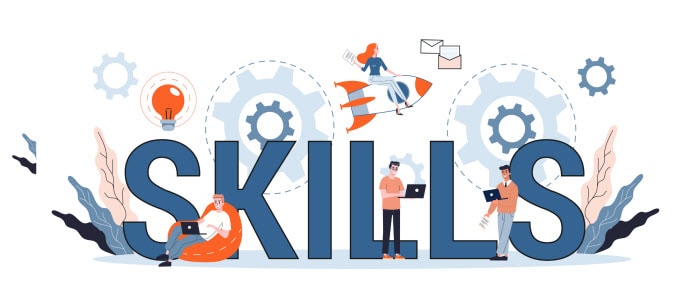Five Strategies Needed To Succeed In Retention Marketing Efforts
Are you one step ahead of today’s retention marketing trends and already engaging with customers through new channels and with new techniques? Or are you playing catch-up and hoping your customers don’t abandon you to find other brands to buy from?
Successful marketing means adapting to new trends and responding to changes in customer behavior and expectations. Today, customers want a lot. They want personalization. They want brands to know about them. They want to have two-way interactions with those brands in order to build relationships.
How can marketers better respond to changing customer needs? Here are five necessary strategies to succeed in the future of marketing.
1. Be A First Mover On Messaging Channels
Retention is all about building relationships with customers, but that’s hard to do through the one-sided or one-to-many channels that marketers have traditionally used. Customers today are looking for more personalization from the brands they love, and they expect those brands to get to know them. However, they see channels like email talking at them and not letting them engage with the brand.
Messaging apps and social media platforms that offer direct messaging allow for two-way communication. Messaging allows the personalization, engagement and unique experiences that customers are looking for. In order to increase retention, be a first mover on messaging channels. Gartner, Inc. predicts that by 2025, 80% of organizations will turn to messaging. The sooner marketers move, the better.
The benefits, of course, are many. First movers can reap outsized rewards before channels become more crowded. Customers will get to experience a new way to interact with a brand and see it as a front-runner in engagement. Being an early mover also allows marketers to start developing their AI today so that chatbots can become better conversationalists and provide more satisfying experiences.

Are you one step ahead of today’s retention marketing trends and already engaging with customers through new channels and with new techniques? Or are you playing catch-up and hoping your customers don’t abandon you to find other brands to buy from?
Successful marketing means adapting to new trends and responding to changes in customer behavior and expectations. Today, customers want a lot. They want personalization. They want brands to know about them. They want to have two-way interactions with those brands in order to build relationships.
How can marketers better respond to changing customer needs? Here are five necessary strategies to succeed in the future of marketing.
1. Be A First Mover On Messaging Channels
Retention is all about building relationships with customers, but that’s hard to do through the one-sided or one-to-many channels that marketers have traditionally used. Customers today are looking for more personalization from the brands they love, and they expect those brands to get to know them. However, they see channels like email talking at them and not letting them engage with the brand.
Messaging apps and social media platforms that offer direct messaging allow for two-way communication. Messaging allows the personalization, engagement and unique experiences that customers are looking for. In order to increase retention, be a first mover on messaging channels. Gartner, Inc. predicts that by 2025, 80% of organizations will turn to messaging. The sooner marketers move, the better.
The benefits, of course, are many. First movers can reap outsized rewards before channels become more crowded. Customers will get to experience a new way to interact with a brand and see it as a front-runner in engagement. Being an early mover also allows marketers to start developing their AI today so that chatbots can become better conversationalists and provide more satisfying experiences.
2. Clarify Personalization Logic Guiding Principles
The best way to increase retention is through personalization. Collecting data on customers’ interests and preferences allows marketers to more directly target them with relevant content at the right time. However, as data collection and personalization efforts increase, marketers need to determine how they’re going to act on that data to deliver those personalized experiences.
Marketers need to be clear on the principles that guide their personalization logic. What type of content do they want to send to their customers? Will they be focusing on the next best offer or something else? Getting this clear will help them better strategize their retention efforts and will be especially important as predictive modeling, and AI becomes more involved in orchestrating the customer journey.
3. Focus On Data: Collect Zero-Party Data, Quality Inputs And Statistical Analysis
Marketers need customer data in order to drive personalization efforts. Yet, with rising data privacy regulations and iOS changes, it’s getting harder to collect customer data in the same ways as before. According to Salesforce, 90% of marketers say that data privacy changes have fundamentally altered how they measure performance. In order to adapt, focus on collecting zero-party and first-party data from customers through privacy-safe channels.
Zero-party data will provide more meaningful insight into what customers want. As AI becomes more involved in the execution of a retention strategy, the data that feeds the algorithm will have an enormous impact on the outcomes. One conversation can allow marketers to learn more about a customer than a year of emails and push notifications.
To leverage all of this data, learn the fundamentals of statistical analysis. This will help marketers better analyze the data they have, recognize patterns in that data and extract insights into marketing efforts from those patterns. By seeing the impact of these efforts, marketers will be better able to build control groups, test their efforts, optimize them and then scale.
4. Prove ROI And Continuously Communicate Findings To Leadership Teams
In today’s challenging economic landscape, organizations want to focus on creating sustainable paths for revenue growth. That’s why the focus is shifting to retention marketing, which is cheaper than trying to acquire new customers and can create that sustainable growth. How can a marketing team get buy-in and support for those efforts?
In our recent “State of B2C Customer Retention” report, 90% of marketers say their retention tech is generating a positive ROI. Marketers can use analysis tools to prove the ROI they’re getting on their retention efforts before communicating that ROI and impact to leadership. Share these KPIs widely to show the impact of these efforts. This will help generate more buy-in to retention and will make the case for expanding the budget for better retention tech tools as well.
5. Learn Conversational Design And How It Fits Into The Customer Journey Design
Marketers looking to leverage one-to-one messaging can prepare for the future by learning conversational design. Conversational design is used to make chatbots sound more natural when they interact with customers, giving them an easy, fun and satisfying experience.
Start by creating the chatbot with a personality that matches the voice of the brand. Determine use cases and script responses so that the chatbot can stay on brand. Build a library of customer intents that the chatbot can rely on to ensure it’s guiding the conversation and getting smarter. Make sure those conversations align with the journeys being built for the customers.
Success Starts Now
Being proactive in recognizing trends and being responsive to those trends will go a long way toward increasing your retention in years to come.
Source: Forbes.com




